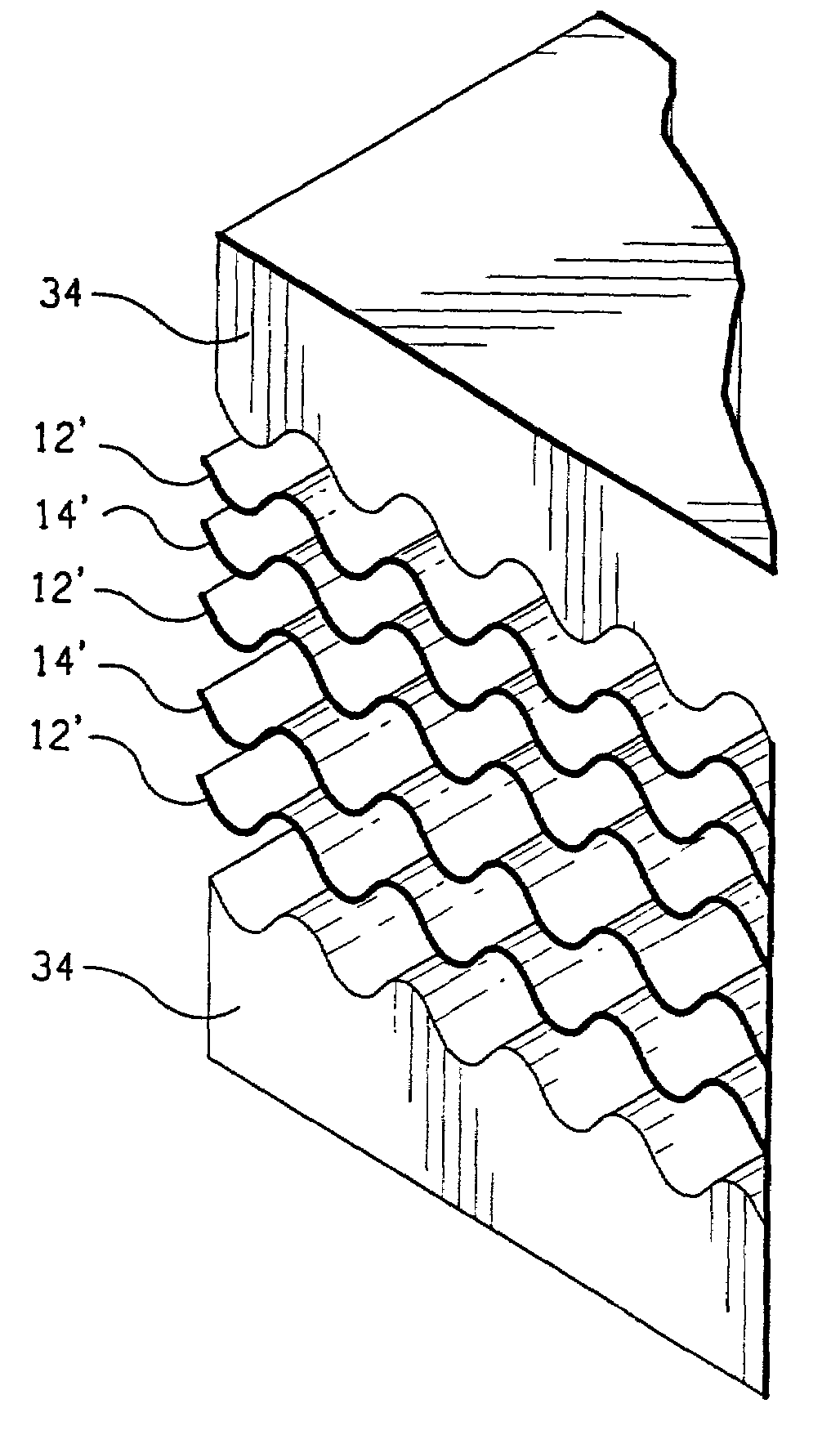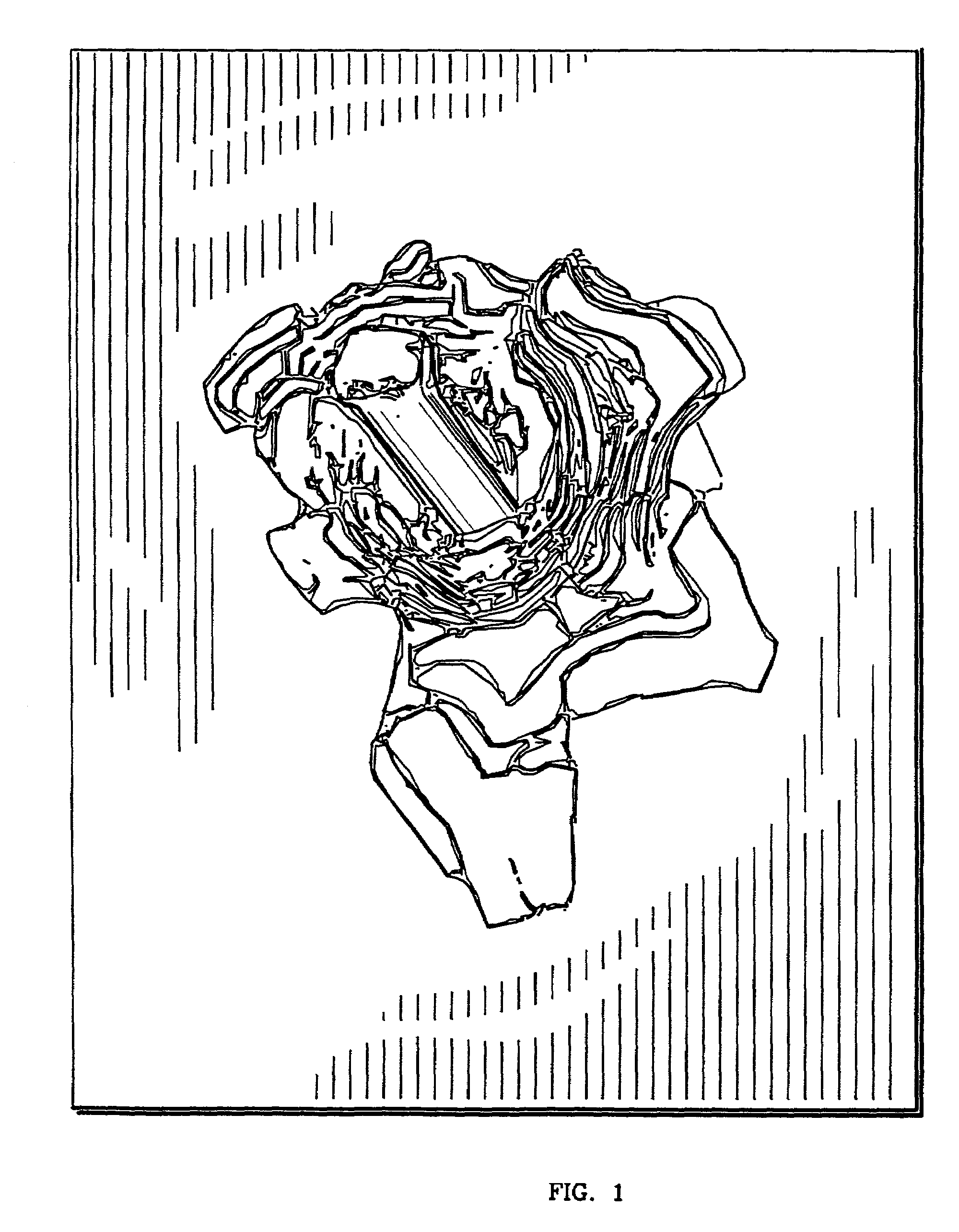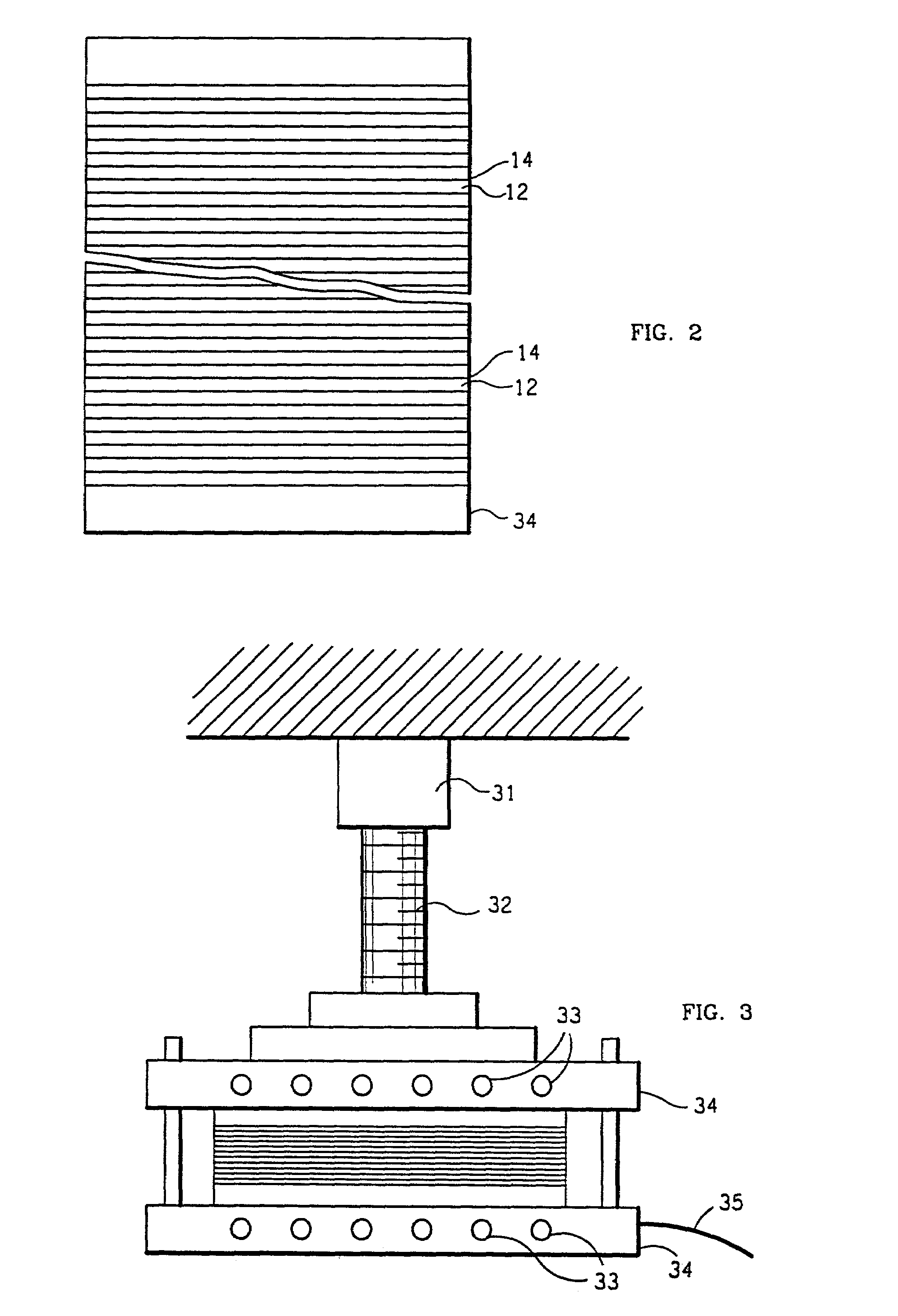Fabrication of interleaved metallic and intermetallic composite laminate materials
a technology of composite laminate materials and interleaved metals, which is applied in the field of fabrication of interleaved metallic and intermetallic composite laminate materials, can solve the problems of limiting its penetration, forming fracture cracks in the plane of composite laminate materials, and not evenly forming in either (i) space or (ii) tim
- Summary
- Abstract
- Description
- Claims
- Application Information
AI Technical Summary
Benefits of technology
Problems solved by technology
Method used
Image
Examples
Embodiment Construction
[0094]Although specific embodiments of the invention will now be described with reference to the drawings, it should be understood that such embodiments are by way of example only and are merely illustrative of but a small number of the many possible specific embodiments to which the principles of the invention may be applied. Various changes and modifications obvious to one skilled in the art to which the invention pertains are deemed to be within the spirit, scope and contemplation of the invention as further defined in the appended claims.
1. Theory of the Performance of Armor Made From the Composite Laminate Material of the Present Invention
[0095]The instant theory of the performance of the composite laminate material of the present invention when employed as armor must be held to be hypothetical, and to be only a best present estimate of what transpires when a projectile impinges upon the composite laminate material. It is possible to estimate the hardness of the embedded interm...
PUM
 Login to View More
Login to View More Abstract
Description
Claims
Application Information
 Login to View More
Login to View More - R&D
- Intellectual Property
- Life Sciences
- Materials
- Tech Scout
- Unparalleled Data Quality
- Higher Quality Content
- 60% Fewer Hallucinations
Browse by: Latest US Patents, China's latest patents, Technical Efficacy Thesaurus, Application Domain, Technology Topic, Popular Technical Reports.
© 2025 PatSnap. All rights reserved.Legal|Privacy policy|Modern Slavery Act Transparency Statement|Sitemap|About US| Contact US: help@patsnap.com



